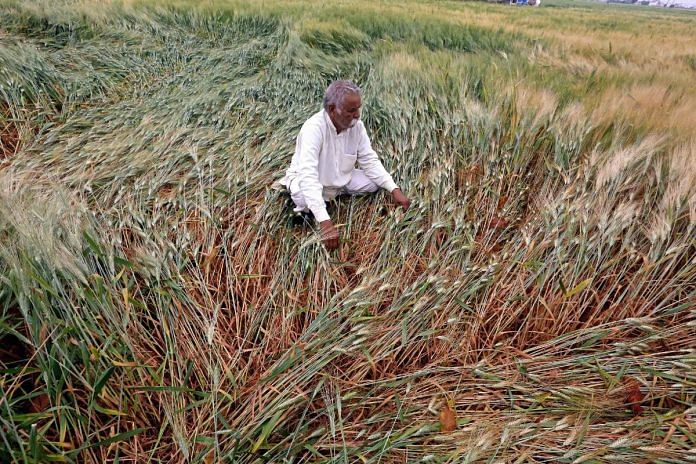New Delhi: A chain of related events could mean that the unseasonal heat being felt in India right now, coupled with a possibly poor monsoon, may make buying homes and other assets on loan more expensive for Indians.
While India has been facing a premature onset of summer-like conditions, agriculture experts worry that this could adversely impact the production of wheat and other crops in the country.
Additionally, the possible onset of the El Nino effect (a cyclical weather pattern) could reduce the likelihood of a normal monsoon, according to weather tracking experts, which would further hurt India’s crop production.
Lower crop yields, in turn, will fuel food inflation. At the same time, core inflation, which is the overall inflation, excluding fuel and food, remains troublingly sticky and a cause for concern for the Reserve Bank of India’s Monetary Policy Committee (MPC).
As such, economists say that it is highly likely that the MPC will not reduce interest rates in its next meeting in April. In addition, it is felt that there is a chance that the committee might even hike rates subsequently.
Higher interest rates will mean that home loans and other loans given out by banks and financial institutions will become more expensive, making buying a house or a car a more costly affair.
Also Read: Why north India is seeing March-like temperatures in February
Premature heat
In a release issued on 28 February, the India Meteorological Department (IMD) said the monthly maximum temperatures for March 2023 “are likely to be above normal over most parts of the country except peninsular India where normal to below normal maximum temperatures are likely”.
It added that even the minimum temperatures across most parts of India will remain above normal during March.
“The unusually high temperature in February and March will hurt production of wheat and other crops,” Siraj Hussain, adviser on food processing at FICCI (Federation of Indian Chambers of Commerce & Industry) and former Union agriculture secretary, told ThePrint. “If heat persists, wheat production may not be the 112 MT that the government is expecting.”
However, Hussain said the situation this year is different because wheat exports are banned — leading to higher stocks that will be available for the domestic market. Other possible government action could also ensure higher availability of wheat in the market, he explained.
“There is a real threat of imposition of stock limits under the Essential Commodities Act,” he said. “So, the government should be able to procure 25 MT of wheat, and will be in a position to release some in the open market in the event of inflation rising.”
However, even if all of this comes to pass and the government does manage to subdue inflation of wheat prices, a possible below-average monsoon could still lead to high food inflation.
The El Nino effect is a cyclical weather pattern phenomenon that usually results in deficient monsoons. The converse of this effect is the La Nina, which results in stronger monsoons. While the IMD has said that the La Nina effect is waning and India is moving towards a neutral state, other weather experts warn that the El Nino effect could return this year itself.
“The main concern is the possibility of the El Nino effect resulting in a less than average monsoon, which will then result in higher food inflation as kharif crops may be affected,” he said.
Concerns over inflation
One of the main reasons the MPC decided to hike the benchmark repo rate by 25 basis points to 6.5 per cent in its meeting last month was due to the persistence of high core inflation.
“On balance, the MPC is of the view that further calibrated monetary policy action is warranted to keep inflation expectations anchored, break core inflation persistence and thereby strengthen medium-term growth prospects,” according to the minutes of the committee’s meeting released by the RBI. “Accordingly, the MPC decided to increase the policy repo rate by 25 basis points to 6.50 per cent.”
If food inflation surges again due to either the unseasonal heat or a poor monsoon, then economists feel that this could mean the MPC will not reduce interest rates in its next meeting in April, and might even subsequently raise rates marginally.
“Inflation remaining under pressure will make it difficult for the MPC to reduce interest rates,” D.K. Srivastava, chief policy adviser at EY India, told ThePrint. “The best one can say is that the likelihood of a reduction in the next meeting is low.”
Srivastava further added that it is likely that the US Federal Reserve will continue raising its own rates, which will likely induce a marginal rate hike by the MPC in India.
(Edited by Geethalakshmi Ramanathan)
Also Read: El Niño forecast: Too early to predict its effects, need to wait and watch, say scientists



